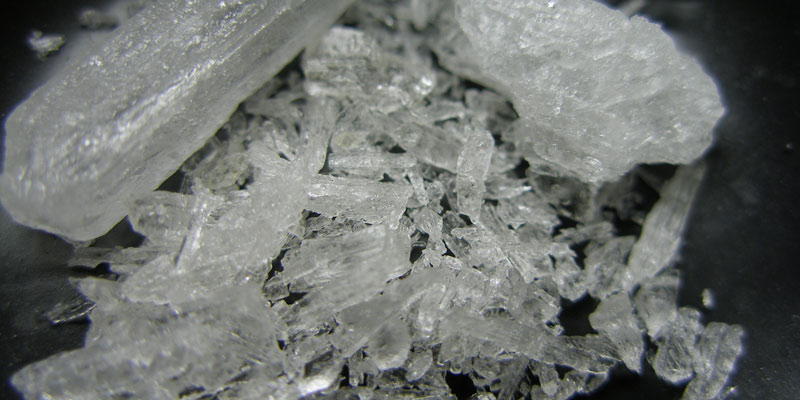Amidst the ongoing opioid crisis, government agencies are warning about the rise of another deadly illegal drug methamphetamine. As the New York Times noted earlier this year, methamphetamine has “never been purer, cheaper or more lethal.” Here are five facts you should know about this forgotten killer.
1. Methamphetamine is a stimulant drug usually used as a white, bitter-tasting powder or a pill, says the National Institute on Drug Abuse (NIDA). Crystal meth is a form of the drug that looks like glass fragments or shiny, bluish-white rocks. Users take methamphetamine by inhaling/smoking, snorting, swallowing a pill, or by injecting the powder that has been dissolved in water/alcohol. Common names for methamphetamine include meth, chalk, crank, crystal, ice, and speed.
2. Methamphetamine increases the amount of the natural chemical dopamine in the brain. Dopamine is a neurotransmitter that affects motivation and helps control the brain’s reward and pleasure centers. Meth produces a “high” (euphoria) by releasing increased levels of dopamine rapidly in reward areas of the brain. Because the effect of the drug starts and fades quickly, says the NIDA, people often take repeated doses in a “binge and crash” pattern. In some cases, people take methamphetamine in a form of binging known as a “run,” giving up food and sleep while continuing to take the drug every few hours for up to several days.
3. Use of methamphetamine has been linked to a number of health risks, including severe dental problems (“meth mouth”), extreme weight loss, hepatitis C infection, stroke, psychosis, paranoia, and other forms of psychological distress. A study published in 2014 in the journal Addiction found that violent behavior increased after subjects used meth. The drug’s users also face a higher risk of death than people who use other drugs, including cannabis, cocaine and alcohol.
4. Nearly 30 percent of government agencies responding to the DEA’s 2017 National Drug Threat Survey said that methamphetamine was the greatest drug threat in their areas. Thirty-six percent reported it is the drug that most contributes to violent crime. The methamphetamine threat is particularly high in the west, southwest, and central parts of the country, says the DEA. The agency also notes that prices are the lowest they have been in years (about $5 a “hit”) and the average purity of seized methamphetamine remains at or above 90 percent.
5. According to data from the 2012 National Survey on Drug Use and Health (NSDUH), over 12 million people (4.7 percent of the population) have tried methamphetamine at least once. NSDUH also reports that approximately 1.2 million people used methamphetamine in the year leading up to the survey. Data from the U.S. Centers for Disease Control and Prevention shows that from 2010 to 2014, the number of drug overdose deaths involving methamphetamine more than doubled, jumping from around 1,400 to nearly 4,000. Nearly 6,000 people died from stimulant use in 2016, and provisional data from the Centers for Disease Control (CDC) indicates that 7,663 people died from psychostimulant use in 2016, with the majority of deaths in this category related to methamphetamine.
(Courtesy of the Ethics and Religious Liberty Commission)
Don’t miss out! Subscribe today to have Alabama’s leading headlines delivered to your inbox.
